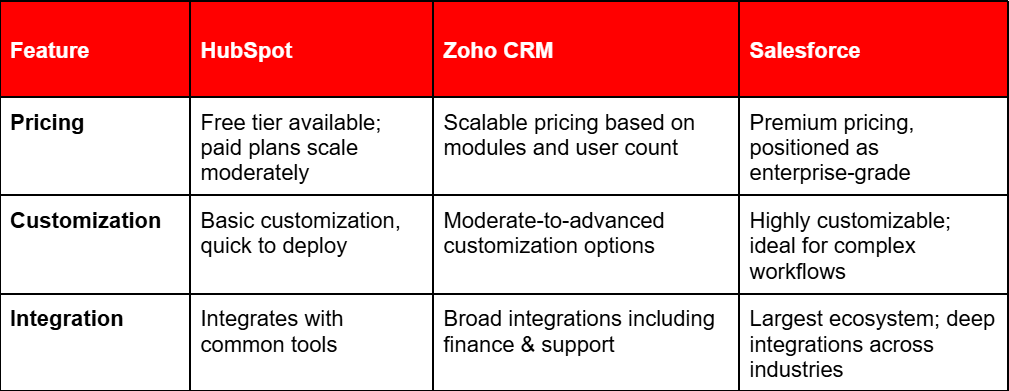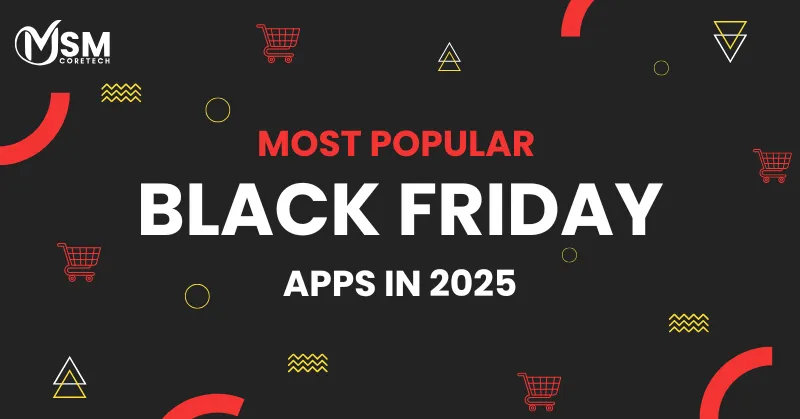Tools and Techniques That Help Small Businesses Compete

Today, we operate in what is termed a burning digital economy, with the rapid evolution of technology working against the limited budgets and fewer in-house experts that small businesses and startups typically must contend with. Over 40% of small and medium enterprises globally admit lacking essential digital skills for successful transformation. Without the right set of tools and digital marketing strategy, ensuring relevance day by day becomes ever harder.
The good thing is, when small businesses successfully adopt technology, platforms, and automation, they can one-up their competitors and take on industry leaders. Smart businesses using smart tools are thrice as likely to experience customer growth. Almost 85% of small businesses have claimed that productivity and efficiency improved once they started using digital solutions. If it is a startup or an established SME, just the right set of tools can very much push their presence forward, lead engagement, and sustain growth.
CRM Platforms—Constructing Intelligent Customer Connections
Discovering Customer Data to Better Connect
The first step to productive customer relationships is getting clean data in place. Every interaction, purchase, and preference carries clues about what motivates a buyer to purchase.
Small businesses can use the data that is made available by these interactions to create space for substantive engagement, helping to convert sporadic buyers into customers for life. Organisations that personalise their outreach based on prior actions are 2.5 times more likely to improve customer lifetime value.
When a local organic skincare brand began to analyse customer preferences based on a rudimentary CRM, it was evident that simply sending timely restock reminders had increased repeat purchases by 42%. When you become a savvy user of structured data, your business's marketing becomes a conduit for relationships rather than an expensive push for "one-time sales".
Customer data indicates who buys, why they buy, how often they buy, and what's likely to happen next. Recognising purchase patterns across a channel using custom data structures allows small teams to identify their most active users, time campaigns, and retain more customers without spending thousands on unreliable, aggressive levers. For a business that is factoring more digital marketing services for small business, structured customer data is a user's instrument to solidify long-term ROI.
The Right CRM: HubSpot vs. Zoho vs. Salesforce Essentials
Choosing the right CRM for day-to-day operations is more important than simply checking off features. Here’s a quick overview of the three most-used CRM platforms in small teams and startups:
HubSpot CRM
Best for: Small teams that want a simple place to begin.
Strengths: A free, basic version, an easy-to-use interface, and excellent marketing workflows. This makes it an excellent choice for novice users who want to quickly get started without requiring extensive technological knowledge.
Zoho CRM
Best for: Budget-conscious startups that need something flexible.
Strengths: Inexpensive subscription pricing; modular (scalable) capabilities, and solid selling and service capabilities. This is a popular choice for firms that are growing by phases—e.g., a design studio that expands from two employees to ten employees.
Salesforce Essentials
Best for: Growing businesses with increased layers of complexity.
Strengths: Highly customisable, good reporting features, and the ability to expand easily. Service-led businesses and companies with larger sales pipelines will find this option most usable.
At a glance:

The question of choosing the right CRM should primarily be based on future considerations of needs and two consecutive phases of a company's growth. Within three months of installing Zoho CRM, a small event planning company reported a 36 percent reduction in missed client follow-ups just from the automation of reminder alerts for meeting follow-ups or enquiries.
Automation for Customer Journeys Without a Large Team
Automation here is not to replace people but to multiply human impact. With these types of CRMs, such as HubSpot or Zoho, workflows are pre-built to take away the burden of repetitive tasks like sending welcome emails, calling, logging activities into the system, and following up on leads.
Zapier-like automation continues to organise systems so that if someone signs up through a form, when their profile pops into the system, they get assigned to the appropriate team member for the welcome sequence and onwards for campaign purposes.
HubSpot workflows enabled the setup of an inquiry pipeline for a decor startup based in Melbourne. Over six weeks, the average lead response time dropped from 14 hours to less than 2, enabling a 28% increase in closed sales.
For small teams, there is no need for big departments to render exceptional customer experiences. Automation takes care of boring matters, so your team may focus on strategy, service, and storytelling. CRMs would allow several SMEs to follow up consistently, segment intelligently, and convert genuinely when combined with small business digital marketing services.
Analytics Tools—Knowing What Works
Google Analytics & Clarity
Knowing how users act in the online world is an essential component of any digital marketing strategy. Google Analytics 4 (GA4) provides tracking of key performance indicators like user acquisition, event-driven actions, and retention trends. It gives small teams visibility of where users show interest and then drop off.
Microsoft Clarity complements this data with a visual representation of user activity in real time. With features like heatmaps and session recordings, it’s simple to see how customers interact with certain areas of your site.
An eco-friendly kitchenware SME, for instance, discovered using GA4 that 65% of users were leaving their checkout page. Clarity session recordings identified that the delivery fee popup was causing confusion for users. Simplifying the user interface resulted in a 22% decrease in cart abandonment rate over a three-week period.
While both platforms provide valid insight individually, the combination of both platforms provides a multifaceted view of user behaviour by pairing the empirical/quantitative data from GA4 with the visual evidence from Clarity.
This multifaceted approach produces better column decisions while laying out the groundwork for future ad campaigns based on a more comprehensive budget, which is applicable for many businesses using small business digital marketing services.
Heatmaps & Funnels!
Heatmaps show only where users clicked, scrolled or hovered. Heatmaps highlight areas of 'hot' user activity and inform you what users noticed and what they didn't. Funnels monitor every step of a user's journey towards completing a form, making a purchase, or booking a demo—they show you where users dropped out and why.
Let's say a small accounting software company realises that their sign-up page has a low conversion rate. A heatmap revealed that users were not scrolling past the first page. After repositioning the CTA button and tightening up their copy, sign-ups increased by 30% in less than a month.
These tools provide context that raw numbers may fail to deliver. Changes in layout, design of CTA buttons, and even the colour of buttons can play major roles in influencing user behaviour. A formal digital marketing strategy incorporates this level of website optimisation, which enables you to make data-driven decisions that prioritise conversion improvements.
Turning Data Into Actionable Strategies
Just tracking metrics does not complete the solution. The other half consists of analysing the data to make content changes, target platforms, or release posts at the best possible times for conversions.
Small businesses using digital marketing services commonly achieve success by fine-tuning their publishing calendars with respect to targeted user behaviours. A furniture SME in Berlin had shifted its blog updates to Wednesday evenings after discovering a spike in traffic at this time, leading to a 15% increase in organic visits.
Content that is popular today can become irrelevant in a week. Platforms gathering leads today will slowly but surely lose their importance tomorrow. Aligning content, platform selection, and posting schedules with real-time user data allows small teams to create blueprints that keep evolving, thus always providing them an edge in an already crowded niche.
Marketing Automation—Work Smarter, Not Harder
Email Marketing Campaign
Small businesses have their restrictions when it comes to time and people. Email workflows facilitate continuous communication, enabling automated repetition of the same touchpoints. Platforms like MailChimp and ActiveCampaign will deliver a structured series of emails based on customer interaction.
Email workflows, such as a welcome series for new subscribers, a re-engagement campaign for inactive users, or reminders for abandoned cart processes, operate in the background to maintain consistency and improve customer experiences.
Mailchimp enabled a Pune-based handmade skincare startup to set up a simple onboarding flow, resulting in an increase of repeat visits by 22% and an increase in purchases by 15% within 60 days. The workflows automated the follow-up processes, which fit perfectly well with their scarce resources.
These include marketing automation tools that cut manual follow-ups yet render relevant messages that support customer relationships with the aid of marketing. Therefore, the advantage is maintaining visibility for the customer without increasing any work for them.
Social Media Scheduling
The continual need to maintain a consistent voice online requires much more than 15–30 minutes of real-time effort, while tools such as Buffer and Later help with post scheduling—as well as cross-channel posting—on Facebook, Instagram, and LinkedIn.
Marketing personnel can upload content on an hourly or daily basis, freeing up time for themselves to focus on other operational aspects of the company, thereby giving them ample time to appear active online.
Later allows startups, especially those highly dependent on visual content, to plan ahead. This meant that a D2C jewellery brand would plan their posts for 30 days ahead, this led to a 40% increase in Instagram profile visits and inbound message enquiries for products.
These marketing automation tools are also equipped with content calendars to allow planning, previews for edits before posting, and analytics dashboards to learn what is functioning and in need of adjustments.
Email Personalisation
Sending relevant messages matters. Establishing a regular messaging schedule creates familiarity. Personalised messages based on user behaviour or past interactions further enhance this experience.
Usually, this mechanism benefits startups who are recruiting digital marketing services for their new ventures. For example, a local fitness company with just two co-founders employed ActiveCampaign to personalise messages sent to users depending on the fitness goals they entered during registration. They also sent weekly check-in emails and monthly reward messages. Within four months, retention increased by 35%.
Such planning and combinations of behavioural triggers and data-driven segmentation allow even the smaller teams to compete through outreach with the bigger competitors.
Tools of Outreach
LinkedIn Outreach & Lead Generation with Apollo and Lemlist
Decision-makers in professional services require direct access. Such tools as Apollo and Lemlist make it easier for a prospective client to be discovered and then automated through his/her sales process.
Apollo's extensive database enables businesses to select leads based on job roles, industries, and geography, while Lemlist manages message sequences with personalized content at scale.
An HR boutique based in Mumbai, India, used Apollo to quarry mid-sized IT firms in the secondary area of Mumbai. With Lemlist taking care of cold messaging and follow-up sequences, the firm could harvest 12 qualified leads in under three weeks.
These two outreach marketing tools replaced at least several hours of manual work and consistently maintained communications.
With CRM integration, follow-up automation, and email and LinkedIn support, these tools bring solo consultants and small teams immense power to run B2B pipelines more efficiently.
Managing Digital Reputation through Review Sites
Online reputation has a massive role in creating initial impressions. Websites like Google Business Profile and Trustpilot provide a public forum where clients share their experiences. Positive reviews therefore provide the visibility that consumers searching for and purchasing products need during their decision-making process.
One accounting firm in Mexico started asking for reviews during every tax filing season. Within six months, 40+ positive reviews came in on Google, and they observed a 22% increase in inbound website traffic from local searches.
Creating review profiles, responding to comments or feedback, and asking happy clients to leave public remarks are fundamental concepts followed in digital marketing for professional services. Tools like Sprout Social or Brand24 can help observe the trend of reviews and allow you to respond across platforms from a centrally located dashboard.
Local Targeting via WhatsApp and SMS Campaigns
National service providers often depend on an outreach method based on location. SMS or WhatsApp campaigns reach the end user with minimal friction. Based on the user's location or behaviour, WhatsApp can automatically send a last-minute appointment update, promotion, or follow-up. WhatsApp campaigns record one of the highest engagement rates, with better conversion rates ranging between 45% and 60%.
A physiotherapy clinic in Amsterdam used WhatsApp to confirm bookings and send reminders for therapies. SMS alerts were implemented in combination, and no-shows have dropped by nearly 35 percent in two months.
WhatsApp supports images, videos, and more interactive elements than text-based messages. These channels work well for local promotions, customer service updates, or personalised follow-ups, and they include an easy-to-use integration for outreach marketing tools.
Bonus Techniques for Sustainable Growth
Build and Manage Sites with Low-Code Tools like Wix and Webflow
Maintaining a digital presence shouldn’t rely solely on outside help. Platforms like Wix and Webflow allow small business owners to build, update, and manage websites without writing codes.
Wix is ideally suited for individuals seeking a swift and refined production process through drag-and-drop templates. For example, a solo event planner created a portfolio site in less than a week, complete with booking features and a blog.
Webflow, on the other hand, is for users who need even tighter control over layouts and designs. It is a fantastic option for creatives and agencies who demand pixel-perfect designs with CMS support.
This feature keeps you on your timeline for changes to the website, rather than another's, so your business stays nimble and reduces your long-term costs for web development.
SEO on a Shoestring: Ubersuggest and Screaming Frog
Search visibility is the crux of a strong digital marketing strategy. Ubersuggest helps by easing keyword research, content planning, and competition tracking. A tutoring centre in Canada used it to generate topic ideas with low competition but high search volume, and organic traffic rose 40% within two months.
Screaming Frog acts as a technical SEO check-up tool. It finds issues, such as broken links, duplicate content, or sites lacking a meta tag. On the other hand, its free edition allows you to look at just under 500 pages, making it, in turn, perfect for SMEs needing to audit their sites every once in a while without shelling out for a specialist.
This pair of tracking tools and organic search engine optimization services provides a clear roadmap, one outlines the content you should publish online, while the other ensures your site's technical aspects are optimised for search engines.
Gather Actionable Feedback Using Typeform & Google Forms
Customer insights will help you serve customers better. Google Forms is effective for collecting simple data, such as feedback after a purchase or customer ratings of your service. It's simple to set up, and it integrates easily with Sheets for quick analysis.
Typeform surpasses Google Forms by crafting more interactive and user-friendly forms. For example, a wellness coach in Hyderabad used Typeform to create onboarding questionnaires, with a higher response rate thanks to a clean design and engaging flow.
Both platforms allow you to collect insights in real-time that will inform your product adjustments, service enhancements or marketing message adjustments—all vital ingredients for a sustainable digital marketing strategy.
Integrating customer feedback into your process will help you participate in decisions that are based on real user experience, rather than gut instinct.
Conclusion: A Practical Digital Marketing Strategy That Delivers Growth
A well-defined strategy using purpose-fit tools drives growth, not staff teams or large budgets. Any small team can leverage those building blocks—from low-code websites and automation workflows to receiving SEO audits and feedback gathering.
The fundamental starting point is selecting the most aligned digital marketing services for small businesses against actual goals—refining outreach, managing reputation, and enhancing customer retention. By utilizing purposive platforms and intentionally designed workflows, small teams can make a significant impact without the fear of failure.
If you are positioned in early-stage growth and seeking support with digital marketing services for startups, you can pick an option that scales with your ambitions. Or, if a service business is your offering, digital marketing for professional services ensures that your visibility actually matches your expertise and offered value.
All of this contributes to a sustainable and flexible approach to a digital marketing strategy. The point is not to maintain velocity; it is to create an acceleration of your momentum.
So, are you ready to make an effort? Start building a digital foundation so you can be more effective and focus on more important priorities.
Related Blogs

Can AI Improve Your SEO Strategy? A Complete 2026 Guide
See how AI upgrades your 2026 SEO strategy. Discover smart tools, practical tactics, and data-driven methods to boost rankings and traffic.
Read More

Most Popular Black Friday Apps in 2025
Black Friday 2025 is packed with innovative apps designed to help shoppers find the best deals, track price drops, and save money smarter than ever. Our IT team highlights the top-performing Black Friday apps, advanced shopping tools, and digital platforms every user should have on their phone this holiday season.
Read More
Digital Marketing Audit: Key Steps, Tools & Benefits for Business Growth
A digital marketing audit helps businesses analyze what’s working and what’s not across SEO, content, social media, and paid campaigns. Learn the key steps, tools, and benefits that drive smarter strategies and faster business growth.
Read More




